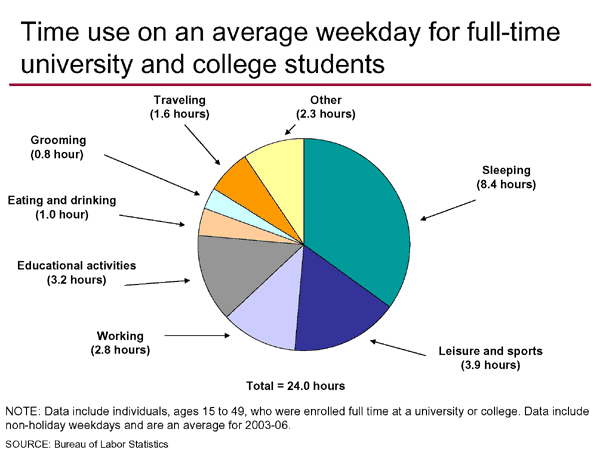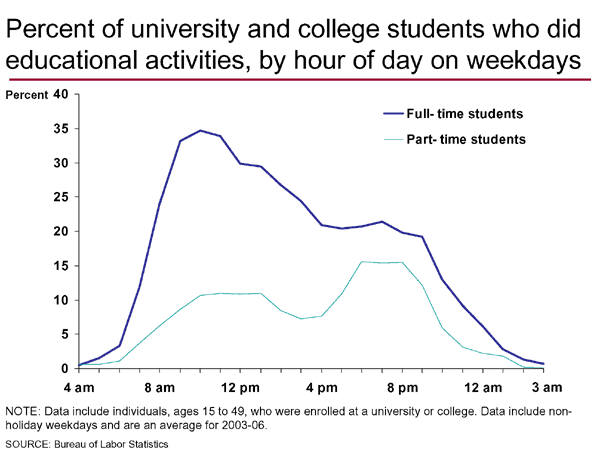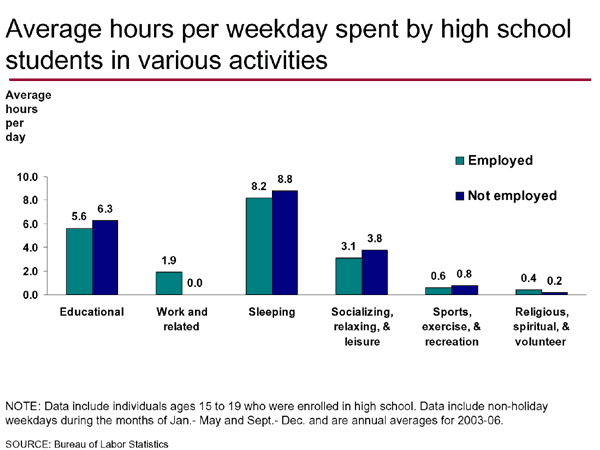Charts by Topic: Students

[Chart in PDF]
[Chart data—TXT]
- On an average weekday, full-time university and college students
spent 3.2 hours engaged in educational activities, 2.8 hours working,
8.4 hours sleeping, and spent 3.9 hours in leisure and sports
activities. (These data are four-year averages for 2003 to 2006).

[Chart in PDF]
[Chart data—TXT]
- Full-time university and college students were most likely to
participate in educational activities in the morning on an average
weekday. By contrast, part-time students were most likely to participate
in educational activities in the early evening. (These data are
four-year averages for 2003 to 2006).

[Chart in PDF]
[Chart data—TXT]
- Employed high school students spent about 42 fewer minutes per day engaged in educational
activities than high school students who were not employed. Employed high school students
also spent less time sleeping and engaging in both leisure and sports activities than students who
were not employed. However, employed high school students spent more time doing religious, spiritual,
and volunteer activities. (These data are four-year averages for 2003 to 2006).
More findings from the 2006 survey:
- About 9 percent of the population engaged in educational activities on an average day.
Those who attended class spent an average of 4.5 hours doing so, and those who did homework and research
spent 2.4 hours in such activities.
- More people did homework on weekdays than on weekend days—7 versus 4 percent. However, persons
who did homework spent about the same amount of time doing it on weekdays (2.4 hours) and
weekend days (2.5 hours).
- On an average day, persons ages 15 to 19 spent 3.3 hours engaged in educational activities, more than
four times as long as individuals in any other age group.
Last Modified Date: August 28, 2007
|